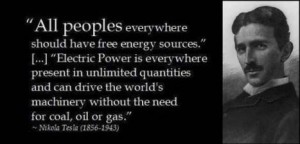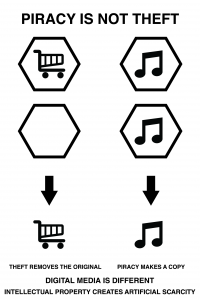Introduction
Copyright laws promises to protect creators and inventors from having the hard work and effort they expend from being taken and used without prior knowledge and/or consent. However the blanket laws that currently exist alongside the overarching power of major conglomerates have had a very counter-intuitive result. It should not surprise you that upon perhaps even a light reflection on your circle of friends and family that you find some, if not all, have infringed copyright in big and small ways. What the current slate of copyright laws have resulted in is a planet full of criminals ranging from children to senior citizens of all nationalities who might be sued and or jailed for something as simple as downloading their favourite song or a stock image or sound byte. One of the main issues with copyright law is that it has not been able to adapt to current communication trends. Coupled in which the way Intellectual Property (IP) is treated like physical property, is that technology has rapidly changed the entire paradigm of how people share and use their creations. Proponents of copyright advocate criminalising the act of copying and redistributing a digital file and labels offenders as pirates. Opponents would argue that the act of stealing should leave nothing behind but dust or in this case the digital footprint of whatever file that used to reside there. If you have ever downloaded anything online you would know that simply isn’t the case and that the pirate label has done little to really help solve the problem. If anything, being called a pirate might just make the activity of copying files much more exciting and fun to do.
The Altruist
Upon a closer inspection of copyright laws and its implementation it is very easy to jump to the conclusion that copyright laws don’t really serve people as it promised. The truth however couldn’t be further from that, as it is important to maintain a certain amount of control over your estate and creations. Nikola Tesla was a prime example of what happens when you don’t take care of your intellectual property. At his prime Tesla was a wealthy man who had many backers interested in the technological marvels he created but his interests were almost entirely altruistic, as he spent all his money and effort on more experiments and inventions whose goal was to either generate free energy for the entire planet or to bring an end to all war (Warner, 2000). Tesla was known to have torn up a contract in which he was promised $2.50 in commission for each Kilowatt of AC electricity sold (Warner, 2014), an amount that would have made him one of the wealthiest people in the world, to save Westinghouse from financial troubles even when they had requested to simply lower the amount (Warner, 2014). One of the other problems he faced came in the form of patents, particularly when the US patents office reversed their decision regarding Tesla’s radio invention in favour of a later design by Guglielmo Marconi which would go on to win him a Nobel Prize. Tesla was not able to win the court case to defend his patent as he couldn’t afford it and would only be recognized for his work after his death (PBS, 2015).

Praise the Old Gods or Pay the Price.
One of the fundamental problems with intellectual property is the fact that people identify it as a physical property. When the government decides to seize property in Australia you are then allowed to, under the Acquisition of Land Act 1967, either object or negotiate for a compensation (Acquisition of Land Act 1967). It cannot be taken unless the government pays for its privilege. When it comes to intellectual property however, when the expiration of a copyright term takes your copyright and turns it over to the public domain, there is no obligation to pay any just compensation for this taking (Lessig, 2004). Even with exceptions such as fair dealing and fair use, copyright laws make it extremely difficult to get away with using copyrighted material. There is however no defence for people who take a film or song for instance and re-distribute copies for a personal profit as this is purely just theft. A case study of how DJ Quik, a producer in Dr. Dre’s Aftermath label, sampled famous Indian singer Lata Mageshkar’s “Thoda Resham Lagta Hai” as the underlying primary sample of his track “Addictive”. However he didn’t clear the rights for it and Aftermath was promptly sued by Calcutta’s Saregama India Ltd. for roughly $500 million in damages (MTV News, 2002). This can be seen as direct theft and use of someone else’s work, however due to the complex nature of copyrighting a melody, even having permission to use someone else’s work can be ineffective.
In another famous case involving the song “Bittersweet Melody” by The Verve, who successfully negotiated a license to use a five-note sample of Andrew Loog Oldmans instrumental version of The Rolling Stones song “The Last Time”. found themselves in an ironically bittersweet position; The Rolling Stones and Andrew Loog Oldman upon realising how immensely popular The Verve song had become, decided to retract their position claiming that too much more of a sample had been used than agreed, and proceeded to independently sue The Verve for damages, claiming over 100% of royalties. When the song won a Grammy (due to copyright and song writing credit being forced over to The Rolling Stones) it was awarded to Mick Jagger and Keith Richards of the Rolling Stones. (Thevervelive, 2005). Furthermore after the group refused Nike’s request to use Bittersweet Symphony in an ad, the shoe manufacturer aired the song after it purchased a license from Allen Klein which lead singer Richard Ashcroft replied “The last thing in the world I wanted was for one of my songs to be used in a commercial.. I’m still sick about it.”. (Thevervelive, 2005).
Copyright laws, become paradoxical when inhibiting future innovators from creating any new work. The original Walt Disney films were adaptations of fairy tales written by the Brothers Grimm (Triska, 2015). As the original story’s copyrights had lapsed and had become public domain (Zipes, 2000) Disney didn’t need to pay anything to anyone when he adapted them and changed the darker tales into something more child friendly. This wasn’t anything new as people have been adapting and changing work from the past four generations. Early cartoons are filled with knockoffs, the key to success was in how much they differed from the original. This “Walt Disney Creativity” is a form of expression and genius that builds upon the culture around us and makes it something different (Lessig, 2004). However back then copyright terms only really lasted for about 25- 30 years, which could be extended upon request but nobody really cared to do so (Lessig, 2004) and this meant that if you saw something, you had the potential to access it in your lifetime. Today’s landscape is rather different however, the 1968 Act updated the law and extended the term of copyright in Australia to allow a person to retain their copyright as long as they live and up to 70 years after death. (1968 Copyright Act). This makes it practically and lawfully impossible for any one person or group of people in their lifetimes to gain access to the wealth of creativity and knowledge created not only today but backwards of up to 50 years and anything that might ever come to be, unless they are able to afford the often expensive clearing rights for the material they want to use; a process that can take several years to clear. Even though Disney practiced this idea of redefining old ideas and turning them into something new, it’s not a practice they condone in anyone that isn’t part of or contributing to their corporation. If you are caught infringing Disney copyright be it through downloading their material illegally or re-appropriating and are caught you are most definitely going to face financially and emotionally crippling lawsuits such as the lawsuit against a cake maker for making frosting that shared a likeness with Marvel and Lucasfilm characters (Gardner, 2015)
The rebel prosumers
As technology evolved, from printing presses to the advent of high speed internet, the way in which people use copyrighted material has changed drastically. In the past copyright laws were implemented expressly to encourage authorship and as there were no other means to make copy besides handwriting, there was no concern to stop people from doing so, if anything it resulted in the original work surviving longer to this day (Stallman, 2002). “In a way the technology of the written book acted as a form of copyright” (Fisk, N 2011, p. 33). Today a single book needs only be scanned once to be spread to virtually the entire planet. A person can download thousands of songs, movies and books in minutes and then spread them onwards to hundreds of thousands of other people. Whilst blatant theft in the case of people who make pirated copies for profit or who used someone else’s work in their own without permission is the ideal situation copyright laws are meant to protect innovators, the blanket laws that exist however don’t do enough to address rapid evolution of technology. As a result, knowing that infringing copyright is illegal has done little to stop people from ‘pirating’ everything they possibly can and making whatever they want with it.
A good example of how this has managed to thrive is the Doujinshi culture in Japan where fans self-publish fan fiction versions of their favourite manga and anime. Instead of the authors rejecting the fan content, a sort of collaborative culture has formed between them. You can find both iterations of work being sold in a peaceful and constructive way that feeds of each other (Sahil, 2002). Remix and sampling culture is one of the biggest problems facing creators particularly due to high speed internet making content so easily available. If a DJ had to get the license to use every single song he used during a set, a set that would change every other week, they would more likely find themselves drowning in debt. Musicians who make music that build on other songs as demonstrated with The Verve also face this problem especially when a single one of their tracks contains many samples as can be seen in tracks like The Prodigy’s “Smack My Bitch Up” or Madeon’s “Pop Culture”.
One of the problems with going after people who make copyright offences is that a lot of the time, they are in fact the biggest fans of the artists. As an artist you wouldn’t want to attack the people who admire you the most. In a recent post on popular gaming website Kotaku, users were asked to comment on their personal reasons as to why if they ever engaged in a life of ‘piracy’, they did so at all, and from the thousands of responses was found that people generally pirated for the same few reasons. They either couldn’t afford to buy the games due to financial troubles, or were unable to obtain the games due perhaps simply to unavailability as older games are difficult to find, or they just wanted to test the games out on their systems and finally the ones who stopped pirating the moment they got jobs (Plunkett, 2015). A good example of developers understanding these restrictions can been seen after Australia refused to give classification to popular game Hotline Miami 2 effectively banning it. The developers were disappointed with this decision and in an email said “If it ends up not being released in Australia… just pirate it after release.” and followed that up with “No need to send us any money, just enjoy the game!”. (Serrels, 2015)
Possibilities
People have been building on the past for as long as they have known and in a very short period of time it has become an illegal act. The imperfect copyright laws coupled with corporate greed have, instead of being protectors of creators, become its biggest inhibitor. People realise this and have not faltered in finding new and different ways to legally work around the laws that exist. New trends have developed in which up and coming music artists for instance simply give away digital copies of their songs away for free albeit generally not high quality lossless audio versions of the track, or how game developers make easily available beta versions of their games before release so those who are unsure can try a game out to see if they like it before making the purchase. A lot of the success of a new creation depends on how well it is adopted by new people, and paywalls make it that much more difficult. Pay-what-you-want or free singles allow people to explore music at a no/low cost risk, and can actually end up earning artists more money in the long run than if they had specified a price tag (Ford, 2015) In 2007, Radiohead made their In Rainbows album available for any price the customer decided to pay, and instead of behaving like economists would predict (paying absolutely nothing), enough people paid good money for the album that it influenced other acts to follow suit (List and Gneezy, 2015). What they found was that people were happy to pay money for things that they feel deserve the money, and that they didn’t want to see their money go to big conglomerates or companies (Rosforth, 2007). Creative Commons is a fairly new institution that was created by Lawrence Lessig as a way to allow creators to keep some rights and allow other people much easier and direct access to their work for adaptation. This does not replace the natural copyrights that are awarded to people automatically but build upon them and require a conscious and active decision of the creator to identify their work as being under the Creative Commons license. Identifying your work as CC does not mean you give up copyright and instead permits users to make use of your material in various ways, but only on certain conditions (CC Australia, 2014) which are outlined in their website. The core condition of CC is that you attribute the work you use ensuring that you will always be recognised what you have made. Due to the convoluted position of copyright today, it’s easy to shun it aside as something for the realm of lawyers, however creators need to be more aware of the rights they are automatically awarded and the way in which they can allow others access to their work in order to ensure that everyone can continue to benefit and build on past knowledge.
Conclusion
Copyright laws have resulted in a constant battle over ownership and innovation and continue to be a topic of debate. Everything someone might ever make is a result of all the past knowledge they have acquired through years of learning from others. This is a fundamental reality of life, and as such, has not stopped people from continuing to innovate regardless of the laws that are in place and should never be made to stop for running the risk of stifling future creation. Even with such strict laws in place people continue to find new and innovative ways to both appropriate and distribute their content. In order to prevent criminalising the entire planet, people need to keep themselves educated on what they can and can’t do, as well as to continue fighting for their freedom to create new things. People must keep themselves educated especially now when almost all aspects of our lives are constantly barraged by a constant hail of new media in order to avoid constricting future generations. Institutions such as Creative Commons are an ideal example of how rights can still be kept while still continuing a legacy of building on their past regardless of any institution that comes in it’s way.

